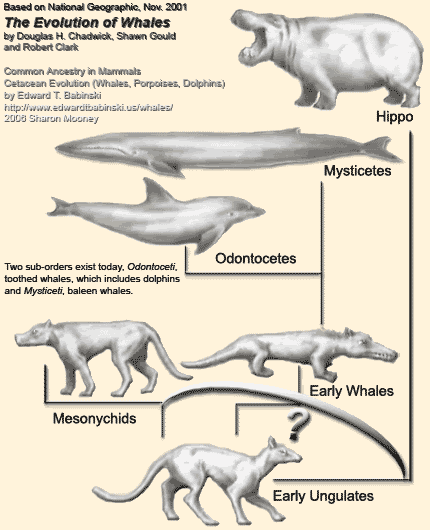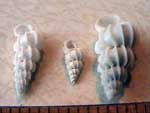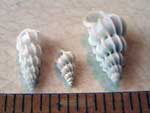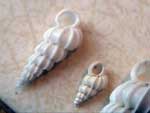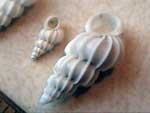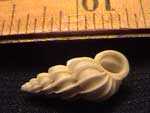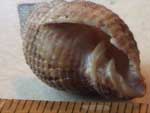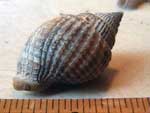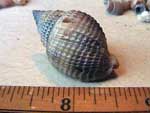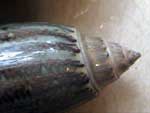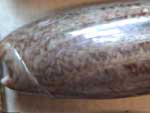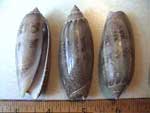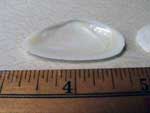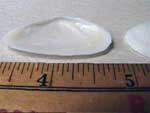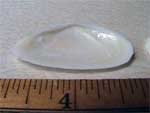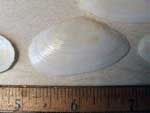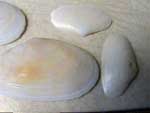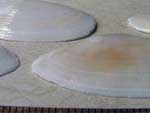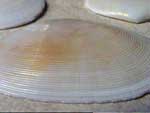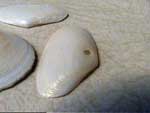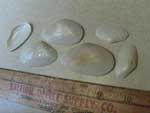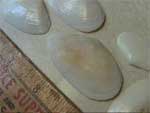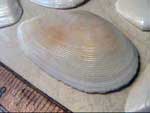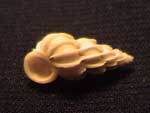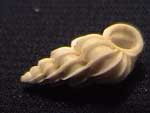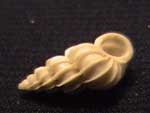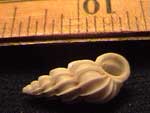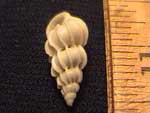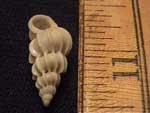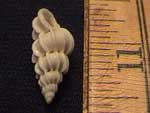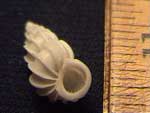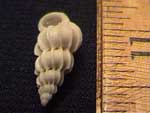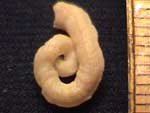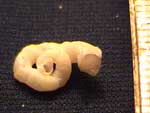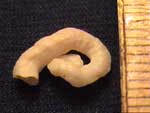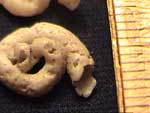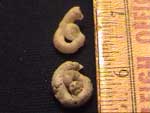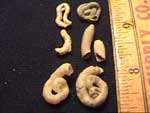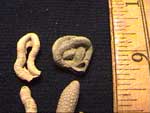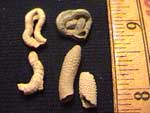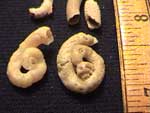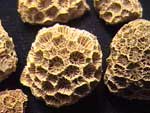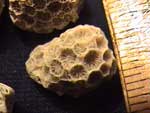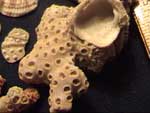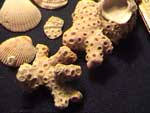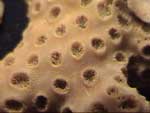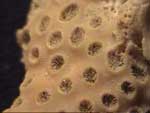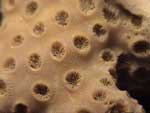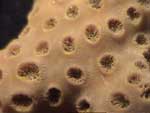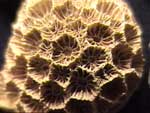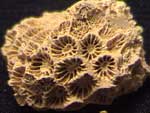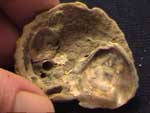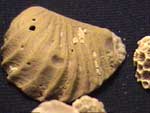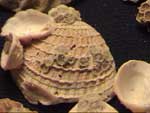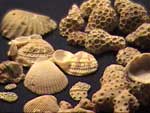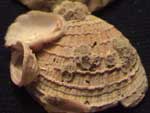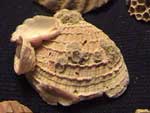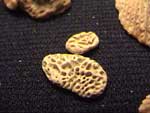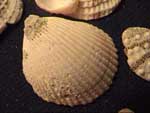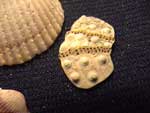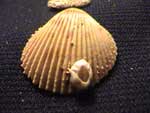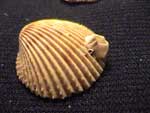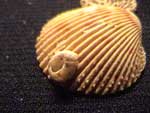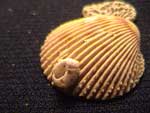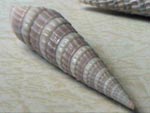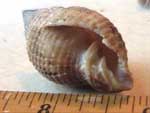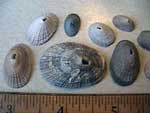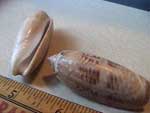- Sally Thomas works as a volunteer with the North Carolina Aquariums.
- Terri Hathaway: I, too, love learning about the natural and life history of marine organisms. They just fascinate me. Guess that's why I went into marine biology (BS degree from UNC Wilmington). I worked as Education Curator at the NC Aquarium on Roanoke Island for 18.5 years before taking this job with NC Sea Grant 2.5 years ago. I now work with teachers across the state, getting marine science into classrooms wherever I can.
I'm happy to answer all kinds of questions about the beach, marine life in general or in specific, etc. I just love living near the ocean and being able to see it and walk along it every day. Looking forward to more communcations with you!
Terri K. Hathaway
Marine Education Specialist
North Carolina Sea Grant
Manteo, NC
www.ncseagrant.org
Sharon: Thanks for those verifications/info, Paul.
Thank you for posting answers on the blog, and I welcome any input, addtl. information -- you can email it to me, and I can publish it into the front pages of the shell entries.
Very curious.. how have you came to be so knowledgeable on marine biology /
shell expertee?
Sharon
- Paul Monfils: Hi Sharon,
Thanks for your email. I have taken a look at most of the shells you have posted on your website. Most of them are certainly correctly identified. I do have a few comments on a couple of them but don't have much time to write tonight. Just thought I would take a moment to respond to your email. I'll write more about the shells shortly.
I have been a shell collector for almost 50 years, and a specimen shell importer and dealer for over 30 years. My undergraduate degree was in zoology, and I have taught that subject at both high school and college levels (though I now work and teach in the area of medical research).
I'm located in Rhode Island, so several of my local species are the same as yours - Mercenaria mercenaria, Petricola pholadiformis, Ensis directus, Polinices duplicatus, etc. Of course you can also find some of the more southern species that are not found here, and I have quite a few northern species that you don't have locally.
Regards,
Paul Monfils
Sharon: Good morning and thank you for taking the time to respond. That's an impressive resume.
I'm curious, can you please identify this shell for me. I found a couple of these in beachdrift and we haven't any idea which species it is.
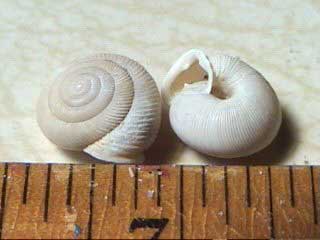
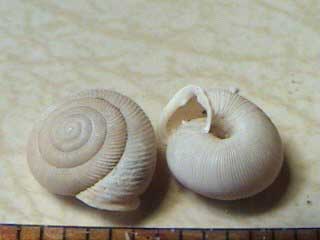
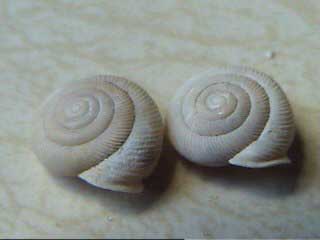
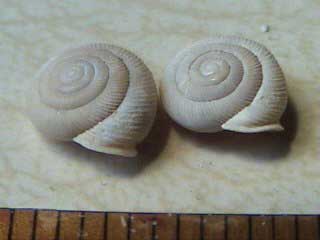
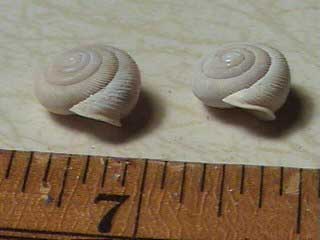
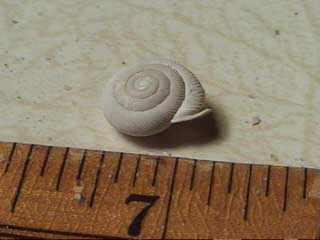
Currently Terri K. Hathaway (NC Sea Grant/Marine Biologist) helps to identify and Sally Thomas, a volunteer from the NC Aquariums. May I count you in as a future contributor for shell identification in the future?
This one (above) hasn't been identified or posted.
Thank you, Sharon Mooney
Paul Monfils: Hi Sharon,
You won't find this one in your seashell books because it's a land snail.
I'm not sure what species it is. I don't know land snails as well as I know marine species, but I do have a fair amount of experience with them. I can probably ID it when I have a little more time.
I'll be glad to help with shell ID. I do this frequently for collectors. A couple of collectors, who don't have the capability of photographing shells and posting images online, mail me a box of unidentified shells now and then and enclose return postage. I identify what I can for them and mail them back.
I don't have a webpage of my own. My customers have been asking me for twenty years when I am going to put one up. But shells are only one part of my life. I already have a mailing list of almost 500 collectors, who send me enough orders to keep me busy for most of my available time. I have nearly 5,000 species of wordwide shells in stock. I also sell shells online sometimes, mainly on
www.shellauction.net, and occasionally on a few other online auctions. If I put up a website I would have to do shells full time just to keep up, and I really don't want that. Maybe after I retire from my present full time job.
Regards,
Paul Monfils
Sharon: So, Terri Hathaway was correct. Paul Monfils confirms it is a species of land snail.
I wonder what it was doing in beachdrift? I found two of them at separate times, in fact. Maybe a fickle species of snail that never quite left the ocean? -or trying to return. *smile*
I keyed your land snail in The Eastern Land Snails, and confirmed my findings in the Compendium of Landshells and a couple of other sources. Your shell appears to be
Triodopsis tridentata (Say), in the family Polygyridae.
Two likely ways for land snails to end up in beach drift -
1. Snail falls into a fresh water stream, is carried to a river which empties into the ocean. (Land snails are usually light weight - without the buoyancy of water around them, they could not carry a heavy shell around as marine snails do - so they typically float.). Once in the ocean it can wash ashore.
2. Snail lives in grassy zone above high tide level. Once the snail dies, wind blows its light weight shell down the beach into the drift line.
I once had a Carrier Shell (Xenophora pallidula) which had attached a land snail shell to itself. That snail shell obviously managed to sink once it reached the ocean, or the Carrier could not have found it.
Regards,
Paul M.
